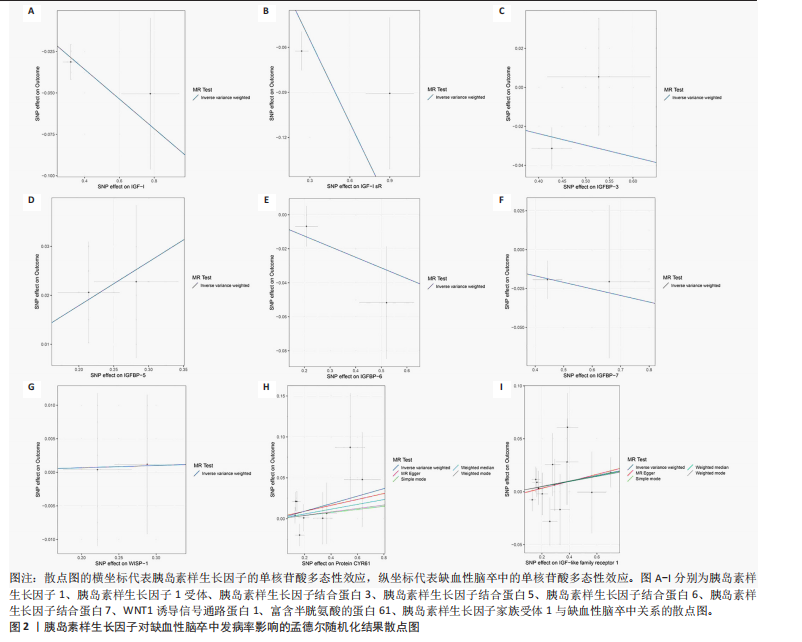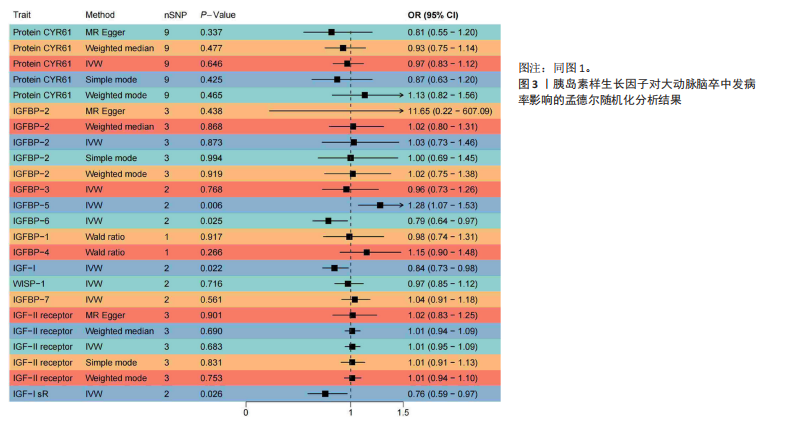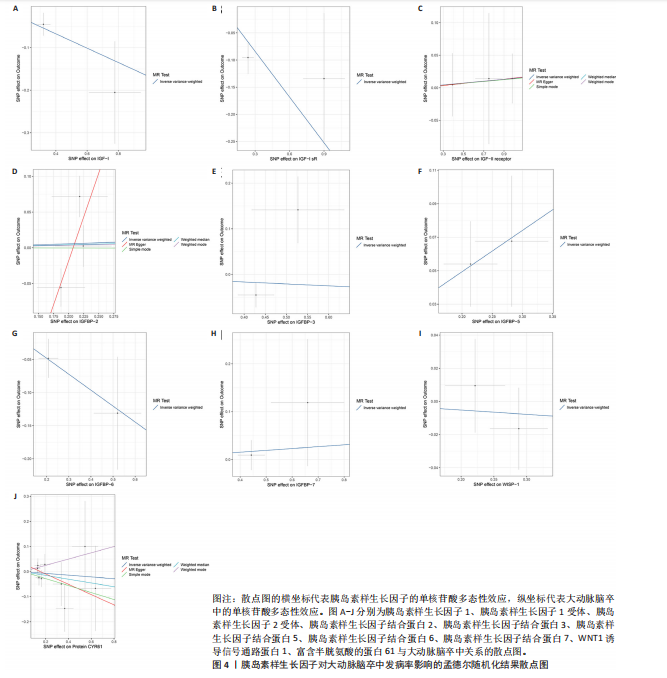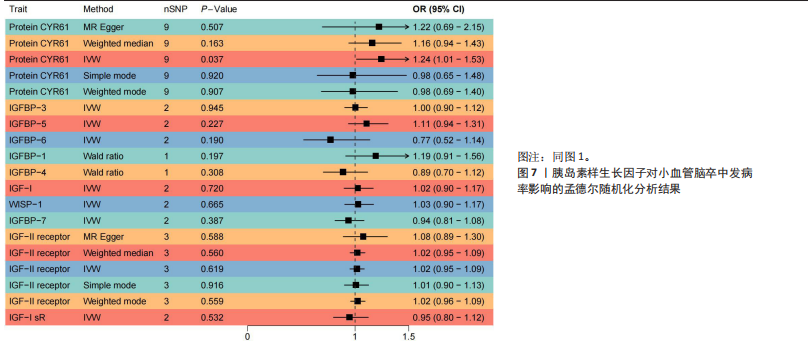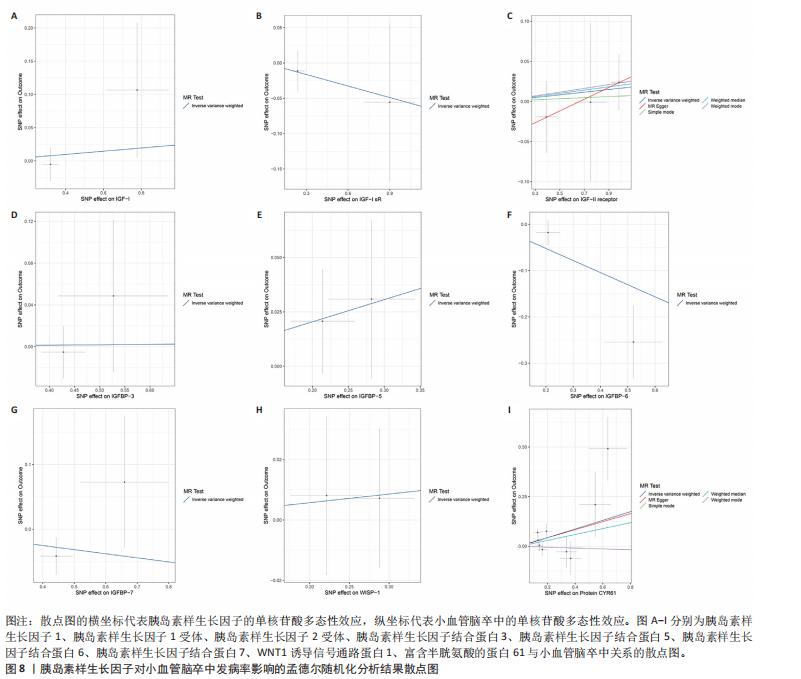[1] HERPICH F, RINCON F. Management of acute ischemic stroke. Crit Care Med. 2020; 48(11):1654-1663.
[2] SHETH KN. Spontaneous intracerebral hemorrhage. N Engl J Med. 2022;387(17): 1589-1596.
[3] 《中国卒中中心报告2022》编写组,王陇德.《中国卒中中心报告2022》概要[J].中国脑血管病杂志,2024,21(8):565-576.
[4] FEIGIN VL, ABATE MD, ABATE YH, et al. Global, regional, and national burden of stroke and its risk factors, 1990–2021: a systematic analysis for the Global Burden of Disease Study 2021. Lancet Neurol. 2024;23(10):973-1003.
[5] MALIK R, CHAUHAN G, TRAYLOR M, et al. Multiancestry genome-wide association study of 520,000 subjects identifies 32 loci associated with stroke and stroke subtypes. Nat Genet. 2018;50(4):524-537.
[6] ALLARD JB, DUAN C. IGF-binding proteins: why do they exist and why are there so many? Front Endocrinol (Lausanne). 2018; 9:117.
[7] LEROITH D, HOLLY JMP, FORBES BE. Insulin-like growth factors: Ligands, binding proteins, and receptors. Mol Metab. 2021; 52:101245.
[8] AKKOÇ MF, KAPI E, BOZKURT M, et al. Investigation of the relationship of growth hormone, insulin-like growth factor (IGF)-1, and IGF-binding protein-3 levels with graft viability in autograft-transplanted pediatric patients with major burns. Transpl Immunol. 2022;73:101624.
[9] 佘露.胰岛素样生长因子系统基因多态性与妊娠期糖尿病的关联研究[D].武汉:武汉科技大学,2024.
[10] ANNUNZIATA M, GRANATA R, GHIGO E. The IGF system. Acta Diabetol. 2011;48:1-9.
[11] BAXTER RC. Signaling pathways of the insulin-like growth factor binding proteins. Endocr Rev. 2023;44(5):753-778.
[12] 张静,潘燕.靶向胰岛素样生长因子系统抗肿瘤治疗的研究进展[J].中国合理用药探索,2024,21(3):20-28.
[13] 熊思敏.精神分裂症患者血清IGF-2水平变化及其与临床特征的关系[J].中国医学创新,2025,22(7):126-129.
[14] ARINAMI H, WATANABE Y, SUZUKI Y, et al. Serum cortisol and insulin-like growth factor 1 levels in major depressive disorder and schizophrenia. Sci Rep. 2023;13(1): 1148.
[15] FANG Z, YANG S, ZHU L, et al. Association study of IGFBP1 and IGFBP3 polymorphisms with hypertension and cardio-cerebral vascular diseases in a Chinese Han population. Oncotarget. 2017; 8(44):77836.
[16] LI Y, YANG W, LI J, et al. Relationship between serum insulin-like growth factor 1 levels and ischaemic stroke: a systematic review and meta-analysis. BMJ Open. 2022; 12(6):e045776.
[17] YANG S, QIN C, CHEN M, et al. TREM2‐IGF1 Mediated Glucometabolic Enhancement Underlies Microglial Neuroprotective Properties During Ischemic Stroke. Adv Sci (Weinh). 2024;11(10):2305614.
[18] JIANG Y, LIU Q, WANG C, et al. The interplay between cytokines and stroke: a bi-directional Mendelian randomization study. Sci Rep. 2024;14(1):17657.
[19] SON JW, PARK J, KIM YE, et al. Glia-like cells from late-passage human MSCs protect against ischemic stroke through IGFBP-4. Mol Neurobiol. 2019;56:7617-7630.
[20] SHIGETOMI E, SUZUKI H, HIRAYAMA YJ, et al. Disease-relevant upregulation of P2Y1 receptor in astrocytes enhances neuronal excitability via IGFBP2. Nat Commun. 2024;15(1):6525.
[21] GADD G, ÅBERG D, WALL A, et al. A Nonlinear Relation between Body Mass Index and Long-Term Poststroke Functional Outcome—The Importance of Insulin Resistance, Inflammation, and Insulin-like Growth Factor-Binding Protein-1. Int J Mol Sci. 2024;25(9):4931.
[22] BOEHM F J, ZHOU X. Statistical methods for Mendelian randomization in genome-wide association studies: a review. Comput Struct Biotechnol J. 2022;20: 2338-2351.
[23] LARSSON SC, BUTTERWORTH AS, BURGESS S. Mendelian randomization for cardiovascular diseases: principles and applications. Eur Heart J. 2023;44(47): 4913-4924.
[24] 朱凯,刘宛欣,罗昊冰,等.血浆蛋白与骨质疏松症的关系及潜在治疗靶点:基于国际UK Biobank数据库信息[J].中国组织工程研究,2025,29(18):3948-3960.
[25] BRACUN V, VAN ESSEN B, VOORS AA, et al. Insulin‐like growth factor binding protein 7 (IGFBP7), a link between heart failure and senescence. ESC Heart Fail. 2022;9(6): 4167-4176.
[26] FERREIRA JP, PACKER M, SATTAR N, et al. Insulin‐like growth factor binding protein‐7 concentrations in chronic heart failure: Results from the EMPEROR programme. Eur J Heart Fail. 2024;26(4):806-816.
[27] ZHANG L, SMYTH D, AL-KHALAF M, et al. Insulin-like growth factor-binding protein-7 (IGFBP7) links senescence to heart failure. Nat Cardiovasc Res. 2022;1(12):1195-1214.
[28] 曹庆泽.IGFBP7在创伤性脑损伤中作用机制的研究[D].西安:陕西师范大学,2024.
[29] WYPYCH M, DOMITRZ I, KOCHANOWSKI J. Insulin-like growth factor 1 and its prognostic value in the course of acute ischemic cerebrovascular events. Arch Med Sci Atheroscler Dis. 2023;8:e146.
[30] ABUDUXUKUER R, NIU PP, GUO ZN, et al. Circulating insulin-like growth factor 1 levels and migraine risk: a Mendelian randomization study. Neurol Ther. 2022; 11(4):1677-1689.
[31] HUANG R, SHI J, WEI R, et al. Challenges of insulin-like growth factor-1 testing. Crit Rev Clin Lab Sci. 2024;61(5):388-403.
[32] HAYES CA, MORGAN NI, THOMAS KC, et al. Neuronal and astrocyte insulin-like growth factor-1 signaling differentially modulates ischemic stroke damage. bioRxiv. 2023. doi:10.1101/2023.04.02.535245.
[33] SABER H, HIMALI JJ, BEISER AS, et al. Serum insulin-like growth factor 1 and the risk of ischemic stroke: the Framingham study. Stroke. 2017;48(7):1760-1765.
[34] CHEN G, LIN T, WU M, et al. Causal association of cytokines and growth factors with stroke and its subtypes: A Mendelian randomization study. Mol Neurobiol. 2024; 61(6):3212-3222.
[35] CAO Z, MIN J, TAN Q, et al. Circulating insulin-like growth factor-1 and brain health: Evidence from 369,711 participants in the UK Biobank. Alzheimers Res Ther. 2023;15(1):140.
[36] SERHAN A, BODDEKE E, KOOIJMAN R. Insulin-like growth factor-1 is neuroprotective in aged rats with ischemic stroke. Front Aging Neurosci. 2019;11:349.
[37] BAKE S, OKOREEH A, KHOSRAVIAN H, et al. Insulin-like Growth Factor (IGF)-1 treatment stabilizes the microvascular cytoskeleton under ischemic conditions. Exp Neurol. 2019;311:162-172.
[38] HAYES CA, ASHMORE BG, VIJAYASANKAR A, et al. Insulin-like growth factor-1 differentially modulates glutamate-induced toxicity and stress in cells of the neurogliovascular unit. Front Aging Neurosci. 2021;13:751304.
[39] 许向明,范玉华.胰岛素样生长因子1在脑小血管病诊治中研究进展[J].中国神经精神疾病杂志,2023,49(4):242-247.
[40] MACHADO FJDM, MARTA-ENGUITA J, GÓMEZ SU, et al. Transcriptomic Analysis of Extracellular Vesicles in the Search for Novel Plasma and Thrombus Biomarkers of Ischemic Stroke Etiologies. Int J Mol Sci. 2024;25(8):4379.
[41] PRENTICE R L, ZHAO S, JOHNSON M, et al. Proteomic risk markers for coronary heart disease and stroke: validation and mediation of randomized trial hormone therapy effects on these diseases. Genome Med. 2013;5:1-15.
[42] 冀伟,郭倩,郑广涛,等.GPER抑制IGF2R表达介导缺血性脑卒中的抗炎作用[J].陕西医学杂志,2023,52(4):369-375.
[43] ÅBERG D, GADD G, JOOD K, et al. Serum IGFBP-1 Concentration as a Predictor of Outcome after Ischemic Stroke—A Prospective Observational Study. Int J Mol Sci. 2023;24(11):9120.
[44] 张翠,吴孟海,多云妍.胰岛素样生长因子结合蛋白3在脑梗死模型的表达及Smad信号通路的参与机制[J].中华老年心脑血管病杂志,2024,26(3):331-335.
[45] 王品砚.外泌体miR-140-5p靶向IGFBP5可激活PI3K/AKT信号通路,减轻TDP-43包涵体对神经元的损害[D].长沙:中南大学,2023.
[46] WANG P, XUE Y, ZUO Y, et al. Exosome-encapsulated microRNA-140-5p alleviates neuronal injury following subarachnoid hemorrhage by regulating IGFBP5-mediated PI3K/AKT signaling pathway. Mol Neurobiol. 2022;59(12):7212-7228.
[47] CUI Y, WANG XH, ZHAO Y, et al. Association of serum biomarkers with early neurologic improvement after intravenous thrombolysis in ischemic stroke. PloS One. 2022;17(10):e0277020.
[48] LIU Y, HUAN W, WU J, et al. IGFBP6 is downregulated in unstable carotid atherosclerotic plaques according to an integrated bioinformatics analysis and experimental verification. J Atheroscler Thromb. 2020;27(10):1068-1085.
[49] 李玉岩,梁莹莹,周洁信,等.IGFBP6在不稳定颈动脉斑块中的作用:生物信息学分析与实验验证[J].解放军医学杂志, 2024,49(6):701-710.
[50] YI X, WU C, WANG H, et al. Effect of connective tissue growth factor and inflammatory factors on the condition and prognosis of patie nts undergoing reperfusion for acute ischemic stroke. Am J Transl Res. 2024;16(11):7155.
[51] LEEUWIS JW, NGUYEN TQ, THEUNISSEN MGJ, et al. Connective tissue growth factor is associated with a stable atherosclerotic plaque phenotype and is involved in plaque stabilization after stroke. Stroke. 2010;41(12):2979-2981.
[52] GUO K, LUO J, FENG D, et al. Single-cell RNA sequencing with combined use of bulk RNA sequencing to reveal cell heterogeneity and molecular changes at acute stage of ischemic stroke in mouse cortex penumbra area. Front Cell Dev Biol. 2021;9:624711. |

